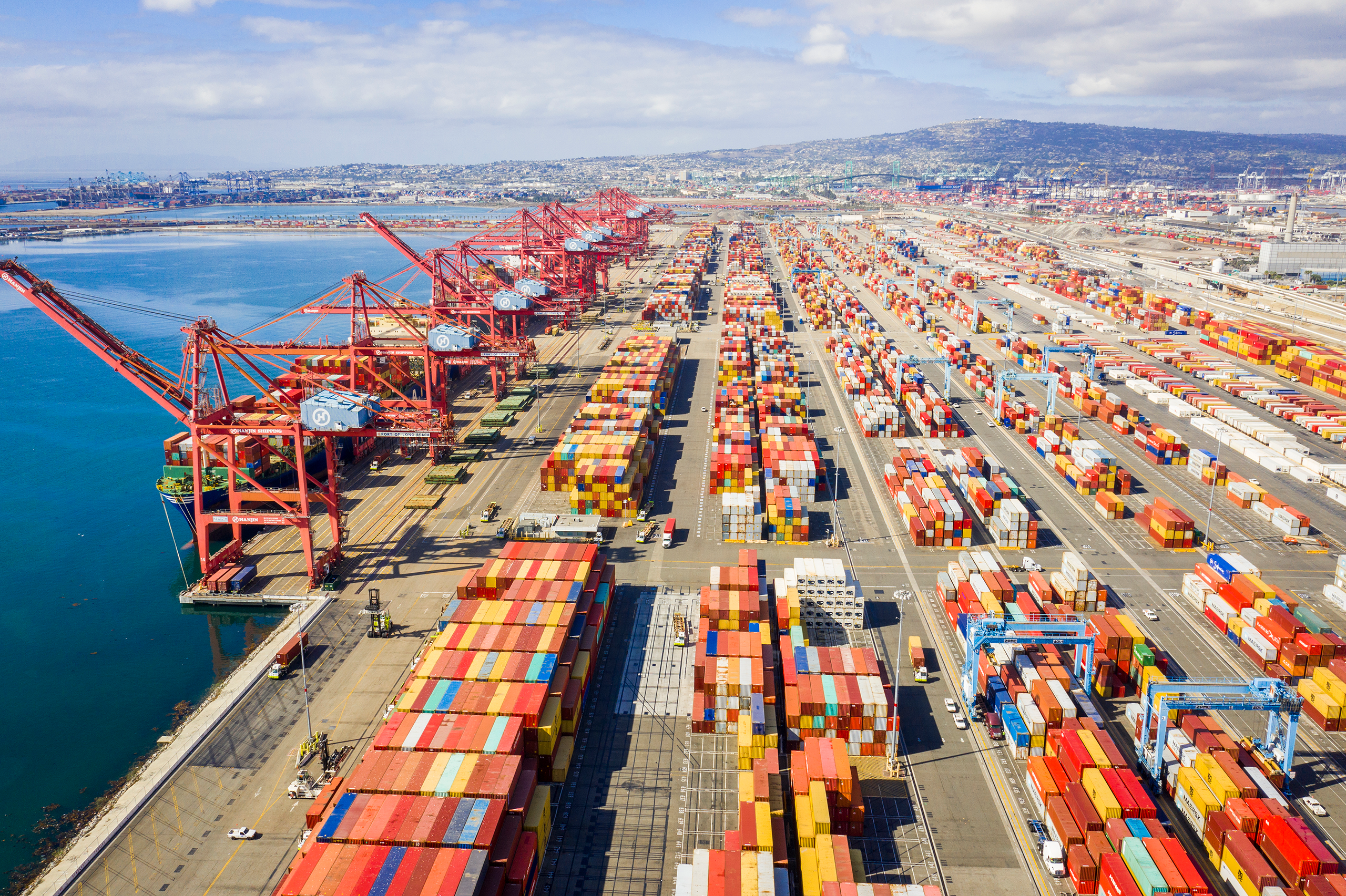Grant applications for rail projects often require a Benefit Cost Analysis (BCA) to measure the impacts of the proposed development. For decades there have been few if any changes in the factors that BCAs consider when comparing moving freight by rail instead of truck. In 2020 Port of Long Beach (POLB), seeking to strengthen an application to the state of California for funding of on-dock rail infrastructure, contracted with industry advisor Strategic Rail Finance to conduct its Lifecycle BCA.
Lifecycle BCA was developed by SRF’s non-profit affiliate OnTrackNorthAmerica (OTNA) to assess typically missing impacts of truck transportation and other operational realities. By discerning and addressing factors across the entire life of a rail project that carry significant costs and benefits to businesses, the environment and community, Lifecycle BCA provides project stakeholders and funders with a more holistic view of a project’s merit.
POLB’s ambitious pier infrastructure project will enable containers to be loaded onto dockside trains rather than trucked 20 miles to an inland rail terminal. A previous conventional BCA for this project only compared a planned 20-mile one-way rail move of each container to the current 20-mile truck dray. This approach neglects many aspects of truck transportation such as return trips to the dock for loading and the impact of truck crashes on congestion and commuter hours. For instance, a container train requires only two operating personnel—versus the approximately 100 truck drivers required for multiple truck, chassis, and container repositioning between the dock and the inland terminal.
Here are the new operational and lifecycle elements that were factored into SRF’s enhanced comparison:
- Pick-up of chassis before arriving at dock
- Truck idling time while waiting for each container to be loaded at dock
- Unloading and loading of containers at interim storage facilities before delivery to inland rail terminal (avg. 2.8 moves for each container)
- Return to dock as an empty truck move
- Truck and personnel logistics at beginning and end of each day’s shift
- Congestion impact from truck crashes
OTNA and SRF continue to identify and measure new BCA factors to drive better understanding by the industry of the real impacts of proposed rail, truck and industrial development.

